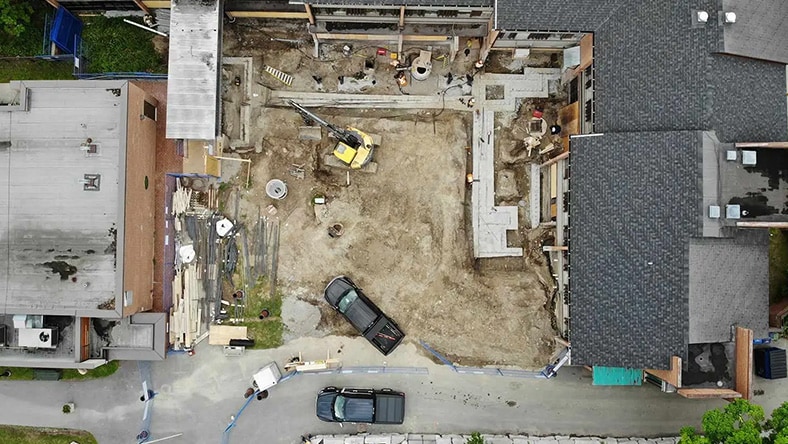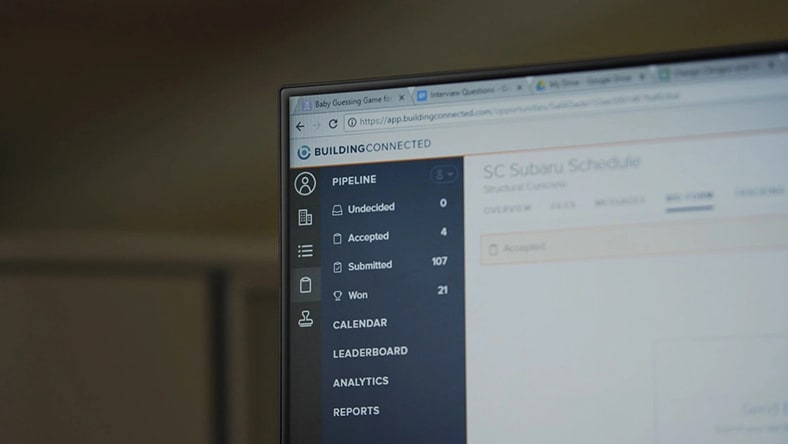& Construction

Integrated BIM tools, including Revit, AutoCAD, and Civil 3D
& Manufacturing

Professional CAD/CAM tools built on Inventor and AutoCAD
A tender process in construction is where clients invite contractors to compete for their projects. It’s the crucial first step in finding the right team to bring your project to life—without it, work can’t kick off on the right footing.
Through the tender process, contractors submit detailed proposals outlining how they would deliver the work, at what cost, and why they’re the best choice. The aim is to select a qualified contractor who offers the best overall value for money while ensuring fairness and transparency. To secure the best outcome, the process needs to be well-structured, clear, and competitive.
Think of the tender stage as a strategic matchmaking process—one that helps both sides find a capable partner who can turn construction plans into reality through open competition and careful evaluation.
The way clients run a tender process can significantly impact a project’s success. Each approach and type of tender serves different needs and complexity.
Open tendering: An open tender is the most competitive option, accessible to any interested contractor to submit a bid. This type of tender is best suited for straightforward projects where maximum competition and market exposure are priorities, and when getting the best possible price is a key driver.
Selective tendering is a focused approach in which only pre-qualified contractors are invited to submit bids, creating a shortlist of only the most suitable candidates. This method works well for complex or specialized projects where specific expertise is crucial or someone is needed quickly.
This method involves direct discussions with one or more of your chosen contractors. During the meeting, the various terms of the project, such as the price, are negotiated. The approach makes sense if the project owner has a preferred contractor in mind, is short on time, or when project details need careful discussion due to their specialized nature.
Serial tendering: Serial tendering involves breaking a project into smaller, manageable packages, allowing contractors to bid on individual phases. Separate contracts are awarded for each package, helping manage risk and maintain budget control, particularly on larger, complex projects or phased development.
A framework tender involves creating an agreement (or framework) with select contractors to build a trusted, reliable network. Instead of bidding on individual projects, contractors compete for a position on the framework, and contracts are awarded as projects arise. Project owners often opt for framework tendering when they’re looking to form long-term relationships with a group of contractors for ongoing and future projects.
Here, the design and construction phases are combined into a single tender. Contractors submit a complete bid, including detailed design and pricing. This approach is usually used for straightforward projects with well-defined requirements, where a single contractor can manage both stages.
A two-stage tender separates the design and construction phases. In the first stage, contractors submit initial bids based on outline designs. A preferred bidder is selected, and detailed design and pricing are finalized in the second stage—useful for projects that need collaborative development.
Every successful construction project starts with a well-managed tender process. From when a project owner declares they’re open to bids to the beginning of construction, here’s how each tender stage unfolds.
The project owner starts the tender process by releasing an invitation to tender—essentially announcing that they’re ready to receive bids. This important document lays out everything contractors need to know: project scope, technical requirements, submission guidelines, and often a request for contractors to prove their capabilities and financial strength.
Think of this stage as the question-and-answer period. Contractors study the tender documents and raise any queries they have about the project. The owner provides clear answers, ensuring everyone understands exactly what’s required. This transparency helps contractors prepare accurate, competitive bids.
With a clear understanding of what’s needed, contractors can now prepare their detailed proposals. They submit sealed bids before the deadline, including their pricing, proposed timeline, technical approach, and any other requested information. This step is basically where contractors make their case for being the best option.
During evaluation, the project owner carefully reviews each bid, often opening them in front of the bidding contractors to ensure fairness. They weigh costs, technical merit, experience, and how well each bid meets the project requirements. Sometimes, project owners negotiate with promising bidders to refine the terms before making a final choice.
After a thorough evaluation, the project owner selects their preferred contractors and formally awards the project. At this stage, project owners notify all bidders of the decision (even if they were unsuccessful) and begin finalizing the details with the chosen contractors.
The final stage brings everything together in a formal contract. Both parties sign the agreement, clearly stating what each side expects. The project starts with a meeting to align everyone’s understanding and establish how they’ll work together moving forward.
TradeTapp automates subcontractor qualification with comprehensive tools for faster and more accurate reviews.
BuildingConnected provides collaboration for owners and builders on the largest construction network, to simplify bid management and qualification.
Powerful BIM and CAD tools for designers, engineers, and contractors, including Revit, AutoCAD, Civil 3D, Forma Site Design, and more
Software has helped reshape how businesses manage the tender process. Project owners can use it to help move their construction plans from concept to contract.
Say goodbye to scattered spreadsheets and endless email chains. Digital platforms like Autodesk BuildingConnected create a smooth, connected process from request for proposal (RFP) creation to bid award. Every step flows naturally into the next, keeping your project moving forward efficiently and reducing admin overhead.
Take the guesswork out of contractor selection. Advanced comparison tools help evaluate bids across multiple criteria, from cost and experience to technical abilities and compliance. Make confident decisions based on detailed, side-by-side analysis of all potential contractors.
Hit the sweet spot with your project budget. Preconstruction platforms deliver accurate cost forecasts, helping contractors submit competitive bids while ensuring project owners get realistic pricing. No more underbidding or budget overruns.
Access everything you need in one secure location. Cloud-based systems create a single source of truth where teams can manage bid invites, track subcontractor assignments, and monitor deadlines. Stay organized and in control throughout the entire process.
Make informed decisions about potential partners. Automated qualification tools analyze contractor profiles against your project needs, examining factors like project history, financial stability, and current workload. Spot and avoid risks before they become problems.
Transform how teams collaborate during the tender process. Built-in messaging and notification systems ensure quick responses to queries, instant updates on changes, and clear communication trails. Reduce delays, prevent misunderstandings, and keep stakeholders aligned throughout the bidding process.
See how industry leaders are revolutionizing their tender process with Autodesk’s suite of tools.
RITESTART
See how BuildingConnected helped RITESTART tap into a vast network of 1.5 million construction professionals to grow its business by 25-30% annually.
BOWMAN FLOORING
Growth was actually becoming a problem for this expanding flooring contractor—until they transformed their approach with Bid Board Pro. By eliminating email chaos and Excel headaches, the company improved tender win rates, added $9 million in annual revenue, and increased overall revenue by 25%.
BRADLEY CONCRETE
An extraordinary transformation story saw this company go from $3 to $42 million in annual revenue. Their secret? Embracing digital solutions through Bid Board Pro and BuildingConnected to speed up bid creation and submission, improve tender tracking, and properly scale their operations.
Take your tendering expertise to the next level with our free tender stage resources.
Transform your approach with Autodesk’s proven framework for success. Discover how to use technology to eliminate manual tasks, create efficient, repeatable processes, and drive an organization-wide adoption of modern tendering practices.
Join this Autodesk University masterclass to refresh your tender phase approach. Learn to navigate complex tender requirements with confidence, cut tender preparation time by up to 50%, create compelling 3D models that set your bids apart, and easily integrate client specifications.
This guide is your roadmap to consistently successful bidding. It covers strategies for selecting the right projects, techniques for crafting winning proposals, follow-up methods, and an analysis of common bid failures and how to avoid them.
The construction bidding process can be broken down into roughly four stages: bid solicitation (i.e., requests for proposals), submission, evaluation and selection, and contract negotiations.
A tender is a formal bid for a construction project made by an interested contractor, usually in response to a request by the project owner.
The tendering process includes four key stages:
The tender period refers to the duration during which contractors or suppliers are invited to submit their bids or proposals in response to a tender invitation for a particular project.
The tender process typically takes 4 to 12 weeks, depending on the project’s size and complexity. During this time, bids are collected, evaluated, and compared. A well-managed process ensures there’s enough time for detailed proposals while staying on schedule to keep the project moving forward.
The pre-tender process involves defining project goals, creating scope documentation, and preparing all necessary details to attract the right contractors. It’s about setting clear expectations and laying the foundation for a successful tender by ensuring the project is well-organized and ready for competitive bidding.
A good tender is clear, detailed, and competitive. It should outline the project’s scope, timeline, and costs, offering a transparent proposal that demonstrates value for money. Strong tenders usually highlight the contractor’s experiences, understanding of the project, and commitment to delivering quality results.









